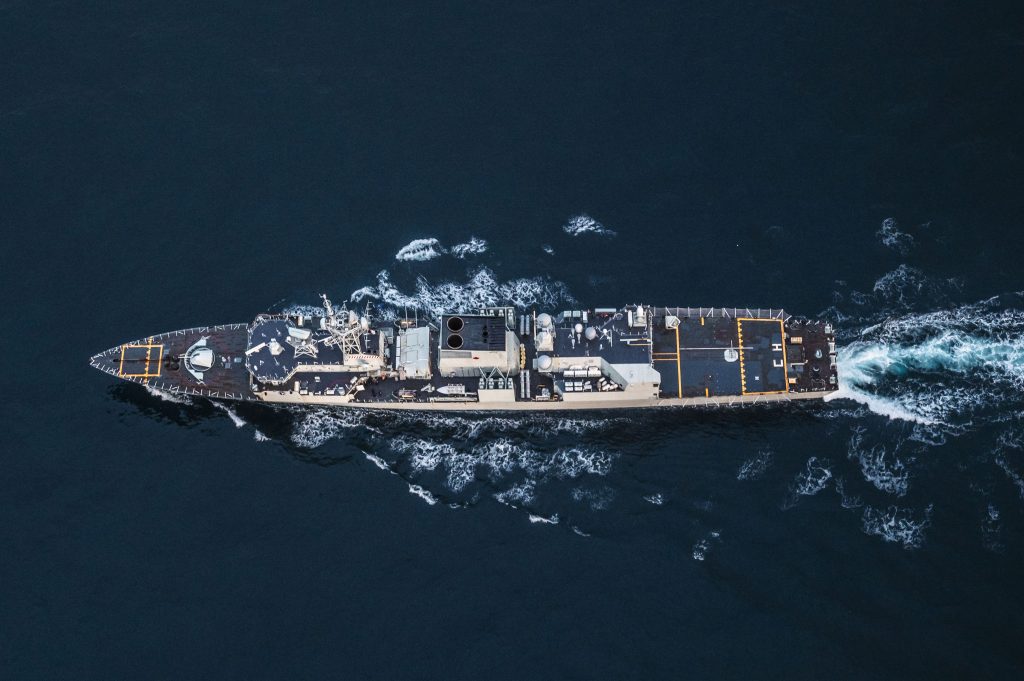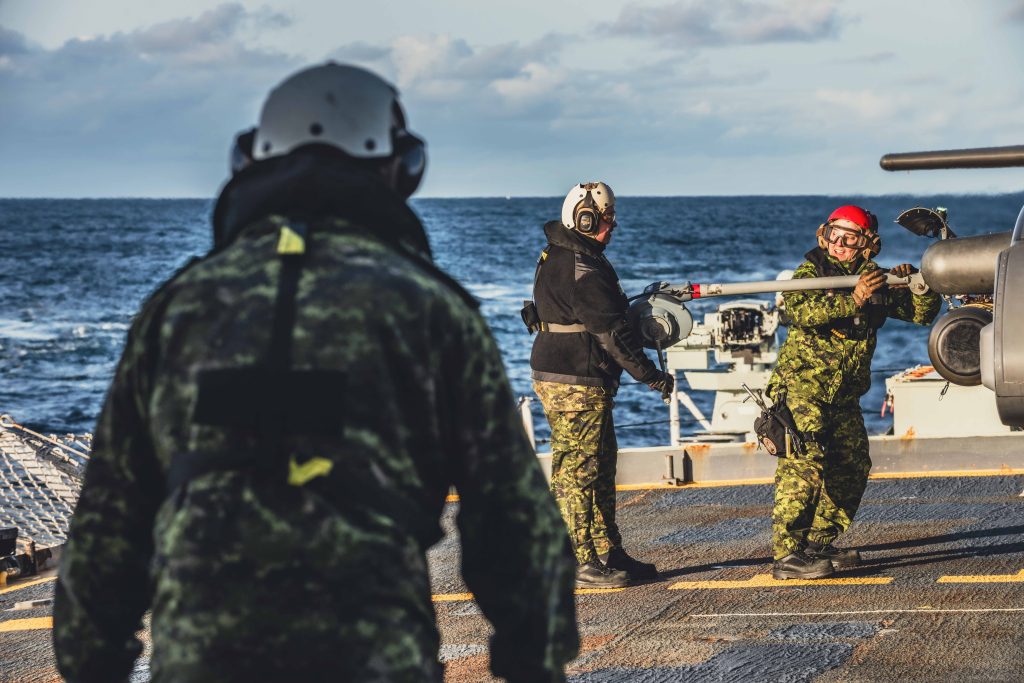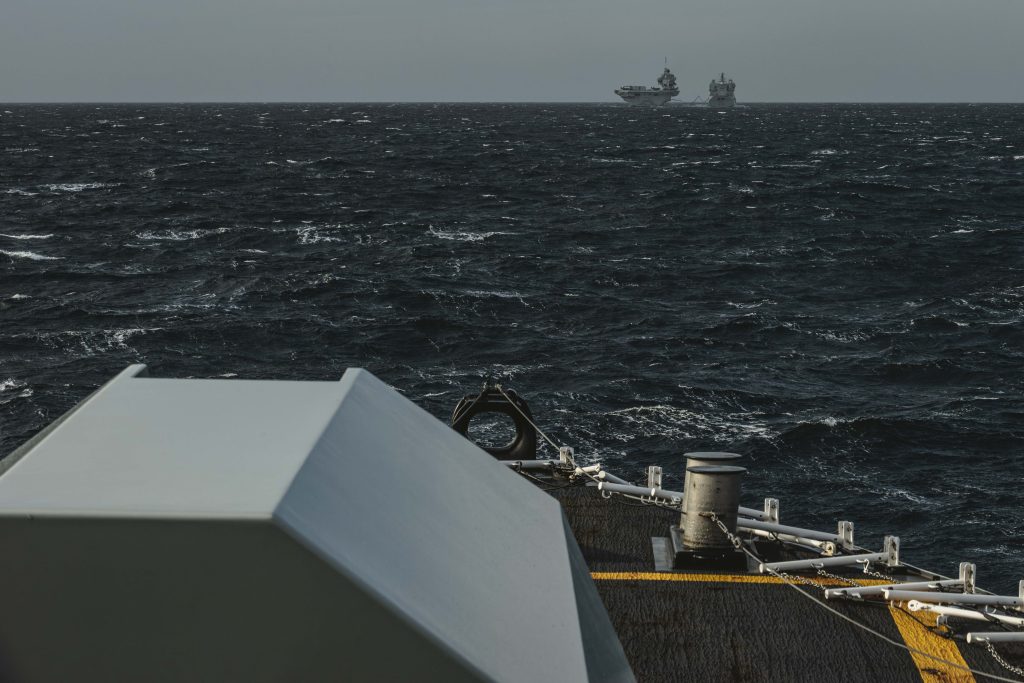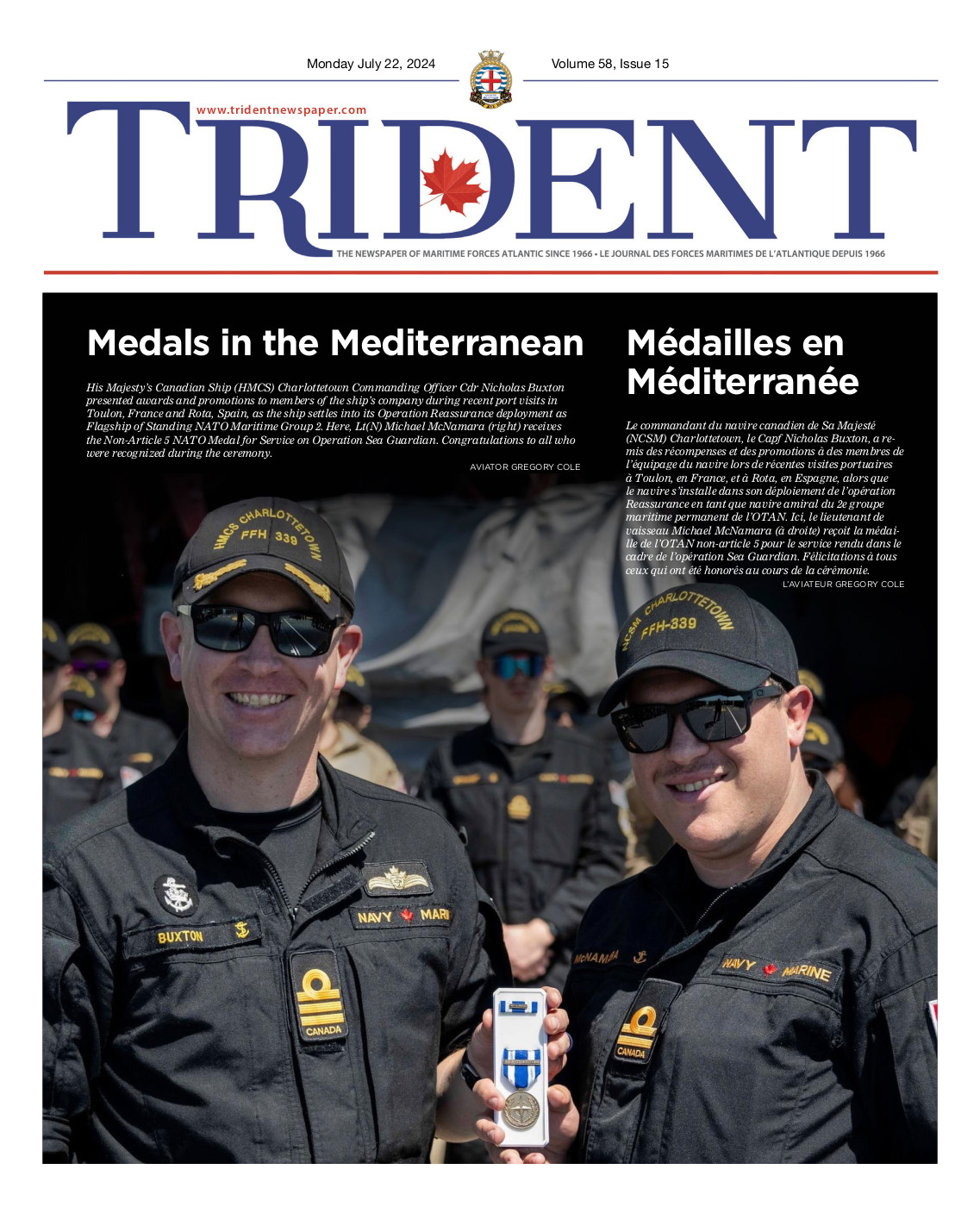
HMCS Charlottetown, the steadfast defender
By Capt Camille MacKenzie Dolphin,
HMCS Charlottetown
On January 31st 2024, HMCS Charlottetown departed Halifax with an embarked CH-148 Cyclone helicopter, a full crew and steadfast determination.

From Canada, the ship travelled across the Atlantic and up to Northern Europe to participate in the largest NATO exercise in decades, Exercise Steadfast Defender 24. The Royal Canadian Navy’s presence in Europe aimed to bolster NATO’s capability in the area.
Exercise Steadfast Defender 24 is the umbrella term that encompasses a multitude of NATO exercises and aims to reinforce Europe via the transatlantic movement of forces from North America.
Exercise Dynamic Guard 24
On February 13th, the ship joined a NATO task group along with ships from Spain and other Allied nations for Exercise Dynamic Guard 24. Dynamic Guard, which is part of Steadfast Defender 24, was a Maritime Command-led live exercise which included an encounter exercise. The activity enabled the demonstration of securing sea lines of communications under a force-on-force live exercise.
In essence, Exercise Dynamic Guard 24 is a bi-annual NATO electronic warfare exercise series designed to help build and maintain proficiency in maritime electronic warfare and anti-ship missile defense for the NATO Response Force and NATO national units.
During the exercise, Petty Officer 2nd Class (PO2) Baldwin, a Sonar Operator, conducted Anti-Submarine Warfare training with his team. They compiled the sonar picture around the ship and attempted to detect an Expendable Mobile Training Target equipped with an acoustic signature.
“In this type of training, we expend a target that puts out different frequencies so it acts as a submarine, and we try to catch it by tracking its location, speed and course. This data helps us find where the target is located underwater. Ultimately it enables the crew in the detection of torpedoes,” PO2 Baldwin said.
Anti-Submarine Warfare requires coordination between ships, submarines, and aircraft; although challenging, it is the most effective way to find and track submarines. NATO draws together the capabilities of multiple nations to leverage them against this difficult mission. Exercises such as Exercise Dynamic Guard 24 ensures command and control is rehearsed to make effective and efficient use of assets.
Once Exercise Dynamic Guard 24 drew to a close, HMCS Charlottetown headed to Scotland for some fuel and replenishment. The ship then sailed to the North Sea for Exercise Joint Warrior 24, also part of Exercise Steadfast Defender 24. There, they joined a different NATO Task Group that included a United Kingdom Carrier Strike Group led by Aircraft Carrier HMS Prince of Wales.
Exercise Joint Warrior 24
Exercise Joint Warrior 24 is a UK-led multinational exercise that takes place in the spring and fall each year over a two-week period, providing a complex training environment. The intention of the event is to sharpen tactics and skills to ensure maximum preparedness in the face of any future threat.
Sailor 3rd class (S3) Rick Forbes is a Naval Electronic Sensor Operator aboard HMCS Charlottetown; during Exercise Joint Warrior 24 he operated the radars and fired the ships weapon systems. His work takes him to the operations room as well as the bridge. He operates the radars to help build a maritime picture – determining who, where, and what is out there.
“Sometimes our duties include port lookout to make sure we are obtaining any contacts that are of interest and that may be in our way. Our job is to find contacts of interest and fire on them should they represent a legitimate and confirmed threat,” S3 Forbes said.
Lieutenant (Navy) (Lt(N)) Nathaniel Askett, Naval Warfare Officer and the ship’s sonar team detect, works with the ship’s sonar team to detect, classify and track subsurface contacts.
“The most effective way to find and track submarines is to listen passively or with active sonar. There are rigorous steps to make sure that what you are tracking is a submarine and not marine life, a sea mount or a pipeline,” Lt(N) Askett added.
“As part of Exercise Joint Warrior 24, we exercised with Allied submarines and expendable acoustic targets. We employed the acoustic sensors on board and our embarked CH-148 Cyclone to track them.”

For the exercise, the Canadian frigate was given the role of Anti-Submarine Warfare Commander in charge of collating a subsurface picture for the Task Group it was assigned to, and coordinating the response to hostile submarines.
HMCS Charlottetown also stood as the lifeguard ship in case of emergency to aircraft carrier HMS Prince of Wales and replenishment tanker RFA Tidespring, while they were conducting a replenishment at sea operation.
The common thread in these NATO exercises: Cohesion. The multinational character of NATO Allies’ commitment to the Alliance and their time training together displayed NATO’s unity, interoperability, strength and resolve.
The exercise demonstrated the transatlantic commitment of Allies to each other, as well as the Alliance’s will and capability to deploy forces from North America to Europe in defense of the European theatre, just like HMCS Charlottetown did this winter,
HMCS Charlottetown deployed for a period of 6 weeks and participated in live exercises with Standing NATO Maritime Group 1. These weeks of valuable training will ultimately enable the ship and crew to be ready to assume command of Standing NATO Maritime Group 2 this summer.





